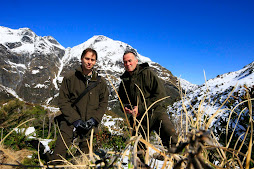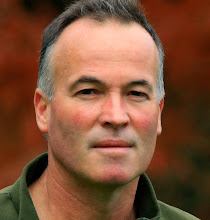Dr Alexis Pietak has undertaken, and now completed, a review of the "mark-recapture" research used to support the use of 1080 poison-laced food to control introduced mammalian species in New Zealand forests. I have pasted the conclusions of her paper below, the remainder of her paper can be viewed by pressing the link, also below.
(Dr Alexis Pietak is a biomedical research scientist, biophysicist, and author who lived in New Zealand from 2005- May 2011. She specialised in biomaterials and biophysics research after completing a PhD in Physics from Queen's University in 2004, which followed her two university degrees in Engineering Physics (2000) and Biochemistry (2001). )Conclusions
1080-poisoned food operations in NZ are supported on an extremely large scale of operation largely because of the apparent existence of a solid body of scientific evidence to support their selectivity, safety, and efficacy. Regarding birds, the main hypotheses of 1080-poisoned food advocates are that 1) aerial poisoned food drops are selective to mammals, and that 2) the benefits of mammalian predator removal for avian species outweigh the risks of death in an aerial 1080 operation. In this report support for these hypotheses were explored by first addressing the selectivity issue, and by assessing an existing hard data set composed of all mark-recapture bird surveys performed in New Zealand from 1986 to 2009 from the basis of experimental design and statistical criteria typically to evaluate scientific investigations and data.
There is no basis to expect 1080-poisoned food operations are selective only to mammals. Birds with normal to high tolerance for 1080 can reach lethal doses by consuming 1080-poisoned food at 0.6 to 12.5 % of their daily food ration. In addition, there is no evidence that the cinnamon scent or colourings used to treat baits deters birds. Furthermore, secondary poisoning of insectivorous species may be possible from invertebrates containing 1080 toxin. Food poisoned with compound 1080 cannot be assumed to be selective for mammals and hence, non-target deaths of a wide array of bird species remain a distinct possibility.
The exploration of the existing hard data set of 49 mark-recapture bird surveys conducted over 23 years revealed basic flaws in scientific experimental design including the overwhelming lack of a control group, small sample size, and short-term studies of three weeks or less follow-up time. On account of the small sample sizes, no study was able to reliably detect kill rates of 20% or lower, and 16% of studies could not reliably detect kill rates of up to 90%, making them completely ineffectual. A final issue with the existing hard data is the very large number of endemic birds that have not been studied and can easily be identified as being of high mortality risk due to corpses found after 1080-poisoned food operations and their innate feeding tendencies.
Only one study investigated 1080-exposed and control groups with longer-term follow ups of several months and found no statistically significant difference in the lifespan in treated or non-treated birds. Only three investigations of breeding success were found, and two concluded with no detected difference between treated and untreated areas. Therefore, it can be concluded that there is only very limited evidence that aerial-dropped 1080-poisoned food may improve breeding success in two species (kereru and robin), one to two breeding seasons following a 1080-poisoned food drop.
To view Dr. Pietak's full report, please click on the link below ...
Dr Alexis Pietak is a biomedical research scientist, biophysicist, and author who lived in New Zealand from 2005- May 2011. More information about Dr Pietak can be found at www.omecha.org or contact Dr Pietak at alexis.pietak@gmail.com
In previous years, I specialised in biomaterials and biophysics research after completing a PhD in Physics from Queen's University in 2004, which followed my two university degrees in Engineering Physics (2000) and Biochemistry (2001). Since then, I've worked as a scientific researcher at the University of Canterbury's Mechanical Engineering Department (biomaterials and biophysics), at Queen's University's Human Mobility Centre (tissue engineering), at the University of Canterbury's Chemistry Department (nanofabrication and biophysics), and at the University of Otago's Department of Anatomy and Structural Biology (biomaterials).
As of 2008, my life has transitioned from a role of mainstream researcher to one of an independent scientist. I’m currently exploring applications of complex systems theory to sustainability, as well as participating in a burgeoning scientific movement which seeks to embrace and develop holistic and alternative scientific views of life. I’m the author of the book, Life as Energy: Opening the Mind to a New Science of Life, published by Floris Books, UK, in February 2011. I also work as a scientific editor, helping people communicate technical ideas/results through peer-reviewed manuscripts, grant proposals, and theses. I aim to express my main ideas through conventional scientific avenues, and have successful published a number of peer-reviewed academic papers to date.
I became aware of the massive, large-scale use of aerial-dropped poisoned food in New Zealand while living there from February 2005 to May 2011. As a lover of nature, my common sense alerted me to the high capacity for widespread deaths of a large number of bird species in aerial poisoned food operations. I realized that aerial 1080-poisoned food drops received such governmental and public support because there apparently existed a solid body of scientific evidence to support their selectivity to mammals, and their overall safety and benefits to an ecosystem. In March of 2009 I began to search for this apparent scientific support, and was appalled at the flimsy and cherry-picked ‘evidence’ that I found. Today I’m proud to join ranks with those fighting to stop the catastrophe of aerial poisoned food drops in New Zealand.








